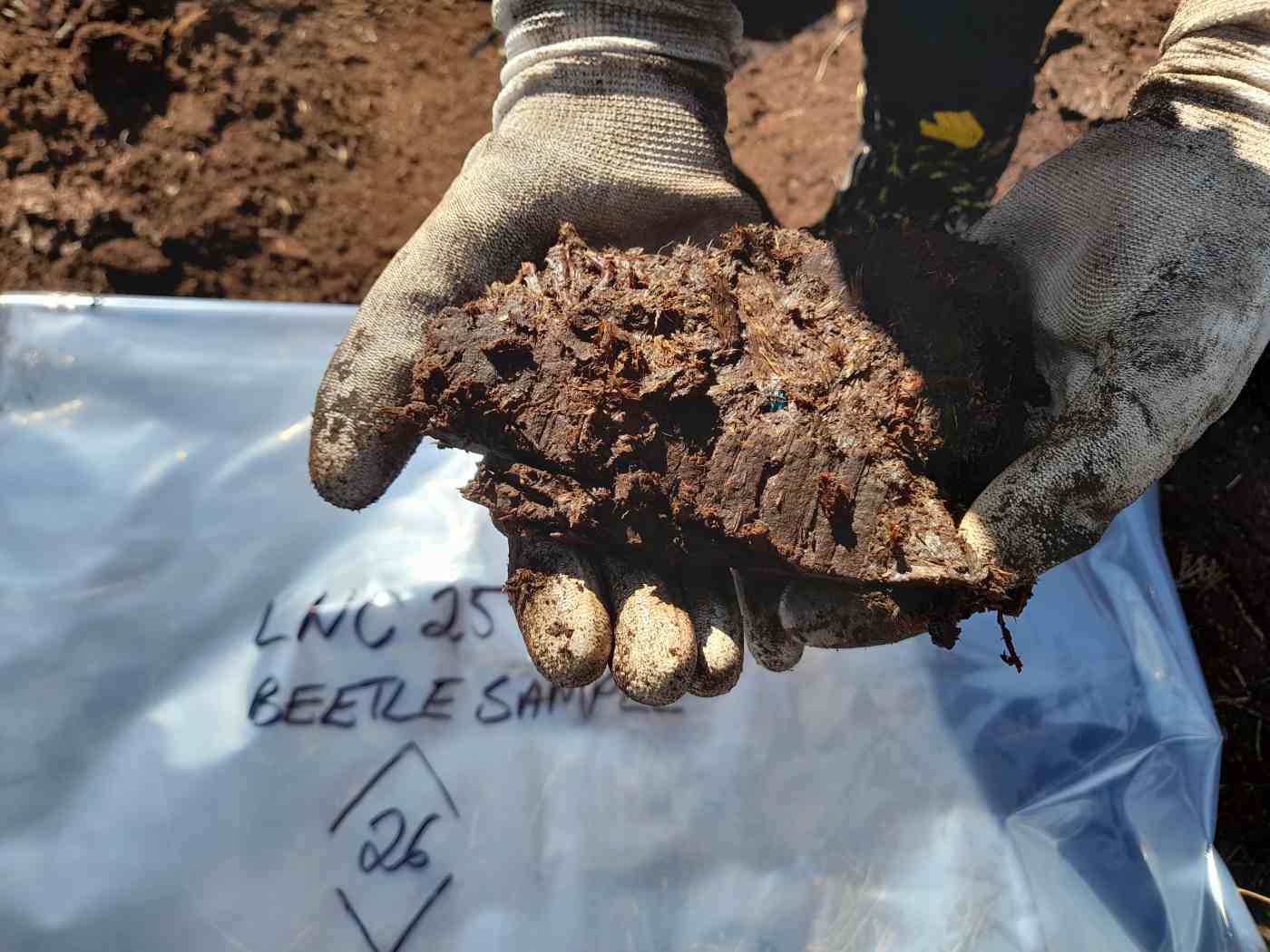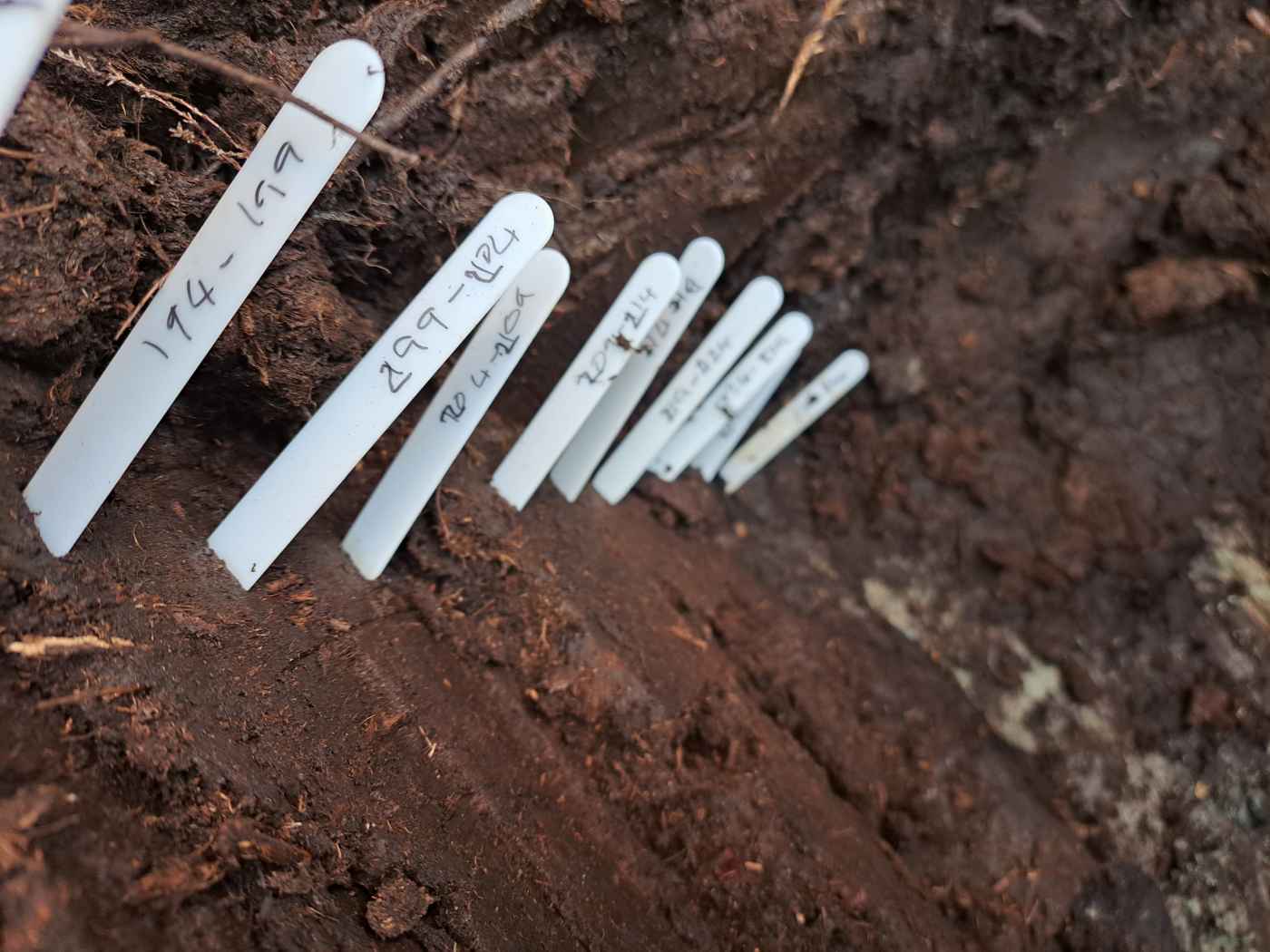Fieldwork at Ben Lawers
Published: 3 July 2025
PhD student Isobel Harvey completed her first round of fieldwork to collect samples for fossil beetle analysis

On 12-13 May 2025, PhD student Isobel Harvey completed her first round of fieldwork at the National Trust for Scotland Ben Lawers National Nature Reserve (NNR). She was accompanied by supervisors Professor Nicki Whitehouse (University of Glasgow) and Mr Derek Alexander (Head Archaeologist, National Trust for Scotland), Dr Wenguang Tang and Mr Stuart Munro (both University of Glasgow), and NTS Ranger Andrew Warwick accompanied by apprentices Jamie Lean and Tony Marshall from the Ben Lawers NNR office.
This fieldwork project was to collect samples for fossil beetle analysis as part of Isobel’s AHRC-funded CDA project and collaboration across the Universities of Glasgow and Stirling and the National Trust for Scotland. The project aims to examine the deep time relationship between human activity and attitudes around peatlands, and the palaeoecological entanglements of these relationships. To do this, beetles are being used as a paleoenvironmental proxy for changing conditions within the peatland to the south-east of Lochan nan Cat, lying below the summit of Ben Lawers.

This isolated corrie contains a mixture of basin and blanket peats with an unusual level of peat haggs in the area. The presence of a small sheiling group within the curve of a nearby burn in the centre of the peatland was first identified by the Royal Commission for the Ancinet and Historic Monuments of Scotland survey of the estate, and later was part of the Ben Lawers Historic Landscape Project. The central location of these sheilings may have been related to historic peat cutting. As such, a sample site was chosen close to them to investigate the relationship between the two landscape features.

Once a suitable peat hagg had been selected, and the slumped material at the front removed, it was possible to examine the internal profile of the hagg in section. The stratigraphic units were recorded and photographed before five-litre bulk slice of peat were removed down the length of the section. These will be processed for beetle remains in the coming months.

The team also collected a core from the same level in the peat hagg, to allow for the collection of radiocarbon dates and to study the relative organic content of the peat strata through Loss On Ignition. The earliest peat deposits within the section appeared to have been well humified and directly overlay the bedrock. It is hoped that analysis of these lower deposits will increase archaeologists’ understanding of the formation and early development of this peatland.
The Ben Lawers estate is rich in past human activity, and it is anticipated that this new analysis of its peatlands will facilitate a greater understanding of this landscape across its history.
First published: 3 July 2025
<< Latest news

